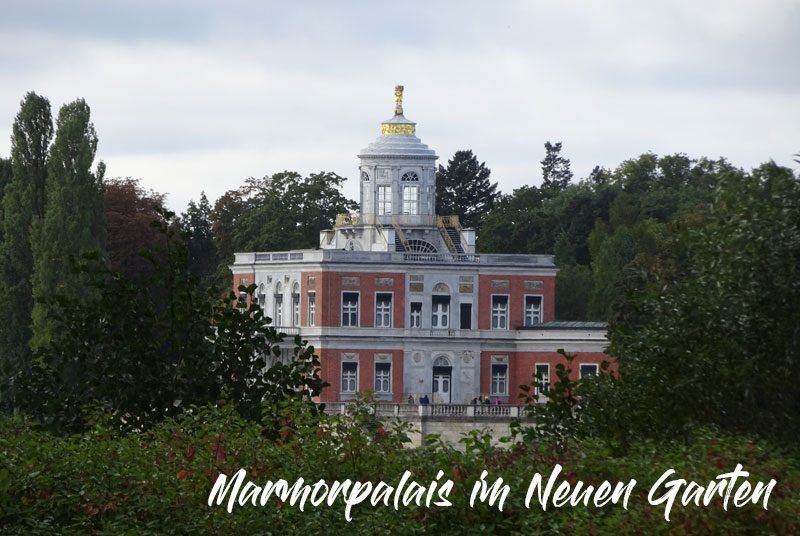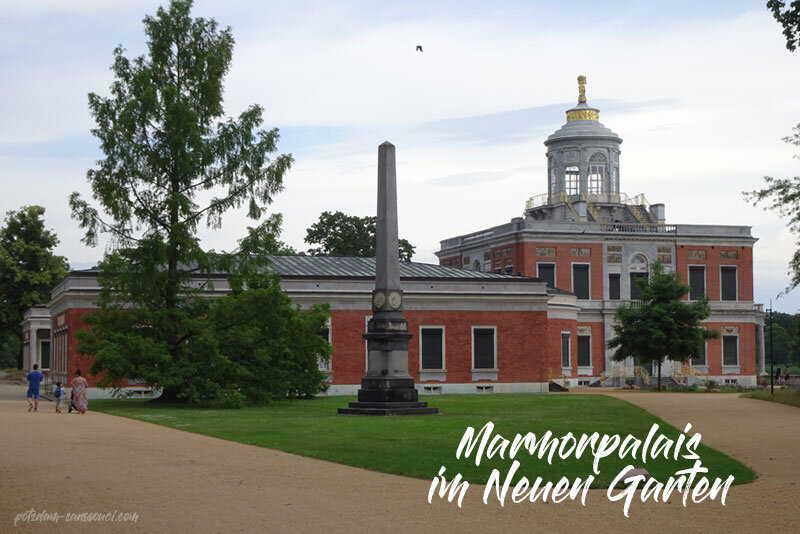
Marble Palace in the New Garden in Potsdam
The Marble Palace in the New Garden in Potsdam, directly on the shores of the Holy Lake, is a fascinating masterpiece of Early Classicism. Built between 1787 and 1793 as a summer residence of King Friedrich Wilhelm II, the palace impresses with its elegant architecture and magnificent interior. After extensive restoration, the Grotto Hall, Concert Hall, and the King’s living quarters shine anew, rich in art treasures, including precious Wedgwood ceramics. Explore the romantic ambiance and the extensive, English-style park, which offers historical insights and breathtaking views. Experience the splendor of the Marble Palace up close – Tickets & Information available here.
| One ticket for all castles: sanssouci+ Ticket (including the Marble Palace)
|
Table of contents
Marmorpalais Potsdam: Summer Residence of Friedrich Wilhelm II
The Marble Palace is situated on a picturesque terrace directly on the shores of the Holy Lake in the New Garden and is a fascinating attraction. King Friedrich Wilhelm II had this structure, clad in Silesian marble, built as a summer residence from 1787 to 1793. Architect Carl von Gontard thus created the first and only Prussian royal palace in the style of Early Classicism. The palace and garden served the artistic king, who was close to the Rosicrucians, as a private retreat.
Later, the future Emperor Wilhelm II and then Crown Prince Wilhelm with his family lived there until 1917. After a phase as a castle museum, the building suffered significant damage during World War II. Between 1961 and 1989, it was used in the GDR as an army museum. In 1988, the comprehensive restoration of the Marble Palace began. The federal government and the states supported the restoration with 11.5 million euros. As part of the Master Plan of the Prussian Palaces and Gardens Foundation, further construction measures were planned until 2013, with a total of 13.5 million euros budgeted for the overall renovation.
The extensive, English-style layout of the New Garden offers impressive views of the Havelland landscape up to Peacock Island. Numerous small, mystical garden architectures such as the pyramid reflect the preferences of the former resident.
Marmorpalais Potsdam: Architecture & Interior Design
The interior design of the Marble Palace, designed by Carl Gotthard Langhans among others, is inspired by ancient forms. Numerous marble fireplaces and antique sculptures were specially acquired in Italy. The rooms are closely linked to the rural idyll of the surroundings, with precious inlays and high-quality wooden floors made of local woods. Fine silk coverings, two grandfather clocks from Madame Pompadour’s estate, and an extensive collection of high-quality ceramic vases from the English Wedgwood factory enrich the exquisite furnishings.
The vestibule made of multi-colored marble, the Grotto Hall by the water, and the impressive Concert Hall are among the highlights of the early Classicist rooms of the palace, most of which are still in their original condition. The almost completely renovated Marble Palace impresses with its artistic arches, which make each room unique. Among the architectural gems in the New Garden are the Orangery, the Dutch Establishments, the Shingle House, and the Gothic Library.
The interplay of unpainted brick and noble marble gives the building its special effect. The marble used for the construction came from the extensive stocks that Frederick II had acquired for his castles. When additional marble was later needed, a valuable colonnade in Sanssouci Park had to be sacrificed.
The interior design of the palace was entrusted to Carl Gotthard Langhans, who also designed the Brandenburg Gate in Berlin. After the death of Friedrich Wilhelm II, the Marble Palace repeatedly served as a residential palace for members of the House of Hohenzollern, preserving the original character of the interior design to this day.
After World War II, the palace fell under Soviet administration and was used by the GDR as an army museum in 1961, surrounded by military equipment such as cannons, an airplane, and a speedboat. The museum was closed at the end of the 1980s.
After extensive restoration, the Marble Palace, including the side wings, is fully accessible again. The Grotto Hall, the Concert Hall, and the King’s living quarters are splendidly equipped with inlays, silk coverings, stuccoes, marble fireplaces, paintings, and handicrafts. Particularly noteworthy is the precious English Wedgwood ceramics.

Marmorpalais Potsdam: Tickets & Guided Tours
| One ticket for all castles: sanssouci+ Ticket (including the Marble Palace) |
